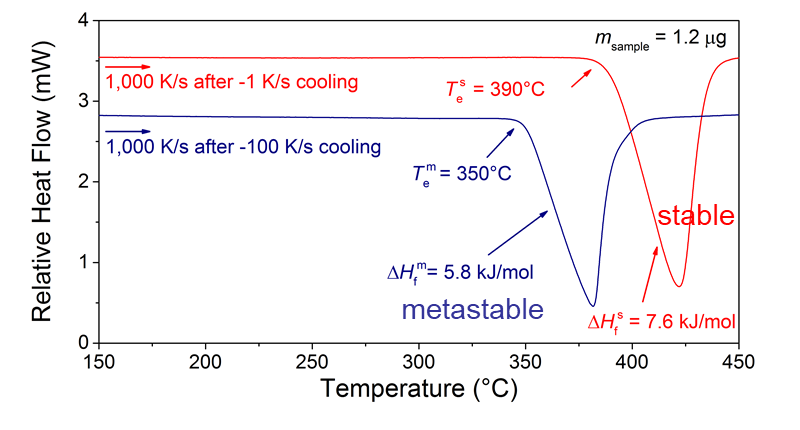Metastable Quasicrystal-induced Nucleation in a Bulk Glass-forming Liquid
In a recent PNAS publication, researchers at the Laboratory of Metal Physics and Technology (LMPT) have demonstrated that crystal nucleation from the melt may generally occur via an intermediate nucleation of metastable quasicrystals. This transition path was observed with a newly developed method of “up-quenching”, which can yield the discovery of hidden transient phases that are key to understanding the nucleation and crystallization behavior in metallic, polymeric and biological systems.

In a recent PNAS publication, researchers at LMPT present a unique Mg-based alloy composition in the Mg–Zn–Yb system which exhibits concurrent formation of bulk metallic glass, metastable icosahedral quasicrystals (iQCs), and crystalline approximant phases upon quenching from the melt. They demonstrate that a transient QC phase, having a low solid–liquid interfacial energy, nucleates first from the melt and subsequently transforms into an equilibrium approximant phase. They conclude that this nucleation path is a general mechanism for metastable QC-forming systems.
The researchers at LMPT observed this phase transformation when they deployed fast differential scanning calorimetry, using the experimental strategy of interrupted cooling after the onset of crystallization, followed by heating at ultrafast rates to “up-quench” the previously frozen structure. Via up-quenching the authors could also completely melt the metastable QC phase mixture, so far never documented in literature. This strategy can yield the discovery of hidden transient phases that are of great importance for the understanding of crystallization behavior in many materials, including also polymers, biological solutions, and pharmaceutical substances. It paves the way to determining thermodynamic parameters of metastable phases, such as melting temperature and enthalpy of fusion, which are of great importance to eventually create metastable phase diagrams.
- Metastable quasicrystal-induced nucleation in a bulk glass-forming liquid, G. Kurtuldu, K. F. Shamlaye, J. F. Löffler, PNAS 115 (2018) 6123-6128. external page Article , external page Supplementary information
- Laboratory of Metal Physics and Technology